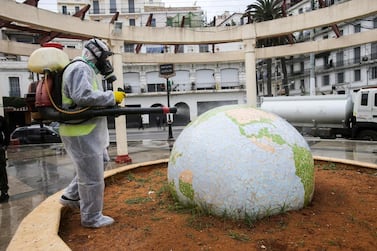Users of the official UK National Health Service coronavirus app have been receiving confusing and conflicting messages that appear to put them in two risk categories at once.
Under a new warning system, England is divided into three categories of medium, high and very high, and the Department of Health and Social Care’s app issues warnings and notifications to users.
A recent app update changed its previous postcode alert system to make it correspond with the new categories.
And on Saturday people in all parts of the country received inaccurate messages.
I am in a High and Medium local alert level, since the NHS Covid app doesn't track or store your location by design.
— Tom Loosemore (@tomskitomski) October 17, 2020
That decision made as a result of a privacy lobby - in whose trenches I've done my time - losing perspective during a pandemic. pic.twitter.com/3Tq1cYYUU2
The problems were first reported by Sky News, which said up to four million people could have been sent incorrect updates in what information security specialist Jeremy Place called "a fat finger error".
"We live in Walsall and it is classed as high risk," one user tweeted from the English Midlands.
In Wakefield, Yorkshire, a user said he was given different information by different phones.
His iPhone had him in a medium-risk area and his Android warned he was in a high-risk location.
The NHS app tells me that my postcode includes areas in Local Covid Alert level High and Very High. I'm confused. My postcode is a small area in Greater Manchester https://t.co/PNWqds0Qaz
— Martin Gill (@MartinGill321) October 17, 2020
In London, some users were not told that the location risk for the capital had changed to high.
“We are aware of an issue which affected updates to postcode alerts for some app users this evening,” a DHSC spokesman said.
“This was identified and resolved within an hour and users’ phones will automatically update to show the correct local alert level for their area, along with new guidance.”
The app was launched in late September after months of delay and questions about its effectiveness after mixed results from countries that had already used such apps.
Because the software is voluntary, its success depends heavily on how many people choose to download and use it, which could be curtailed if it gains a reputation for being unhelpful and giving bad information.
At launch, the app did not accept test results processed in the country's state-run laboratories and hospitals.
It uses Bluetooth signals to log when a user is in close contact with another user, generally meaning within two metres for 15 minutes or more.
If someone tests positive, they can share the result anonymously with their close contacts who will each receive an alert and will have to isolate for 14 days.
Britain is bracing for a second wave of infections with daily cases rising, and much of England is under some form of enhanced restrictions.








